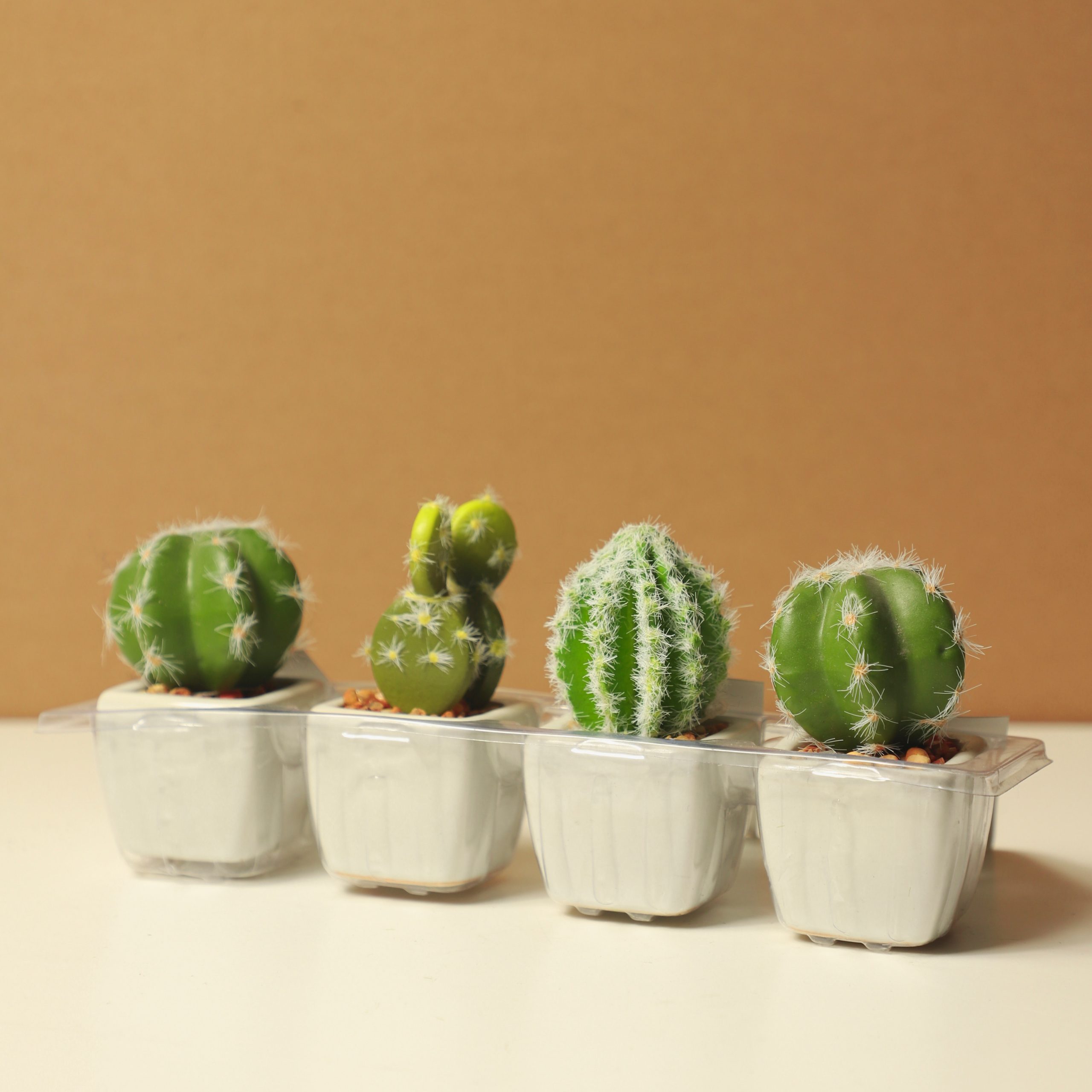Whether you’re an experienced plant grower or a newbie to indoor gardening, adding cacti or succulents to your collection is an exciting way to bring unique, low-maintenance plants into your home.
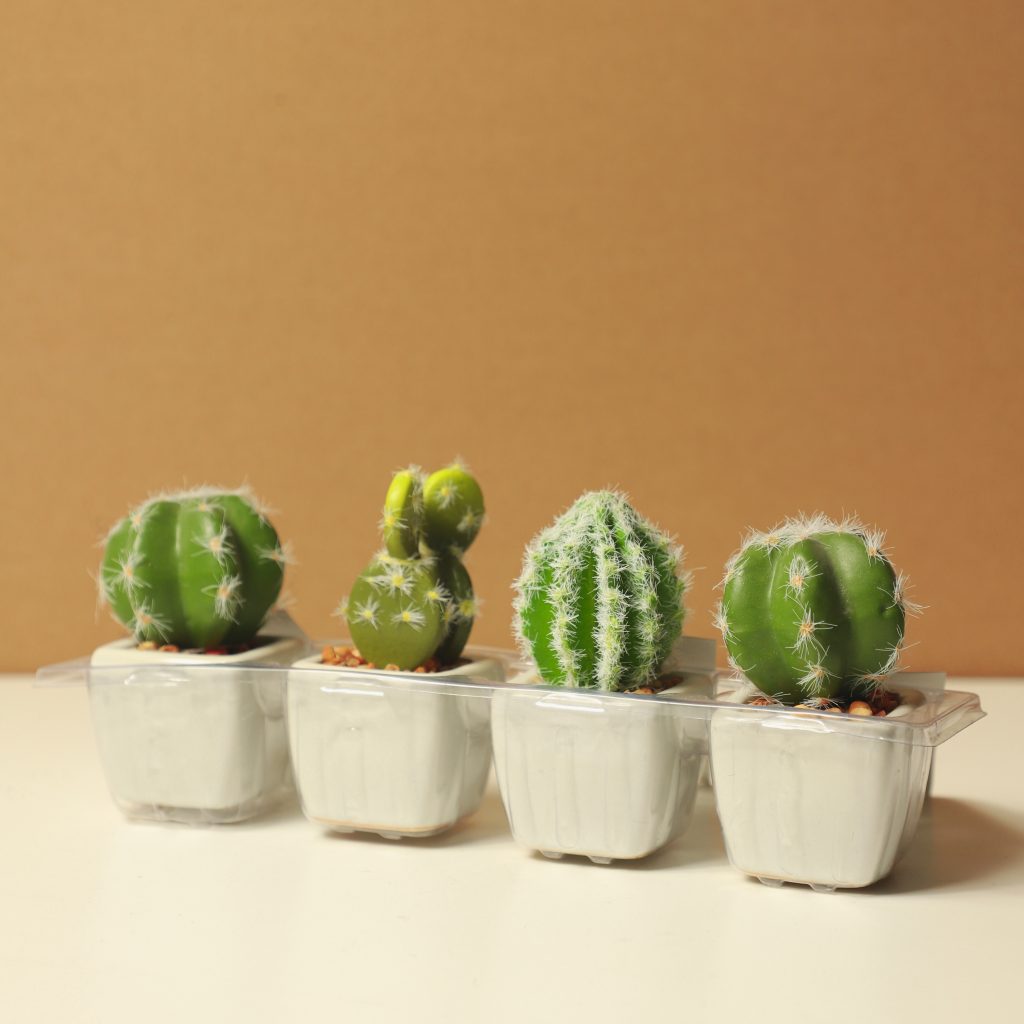
Table of Contents
One of the great benefits of growing cacti indoors is their ability to thrive in a variety of conditions. These desert-dwelling plants are well-suited to indoor environments with low humidity and infrequent watering, making them an ideal choice for busy people or those who are just getting started with indoor gardening.
In addition to being low-maintenance, cacti come in a wide range of shapes, sizes, and colours, making them a versatile addition whatever your style of home decoration. From towering saguaro cacti to delicate Easter cacti, there’s a cactus out there to suit every taste.
Cacti are also great air purifiers, helping to remove toxins and improve air quality in your home. Plus, they’re known for their longevity, with some species living for many years or even decades!
Choosing the right cactus
Choosing the right cactus is an important first step in successfully growing cacti indoors. Not all cacti are created equal, and some are better suited to indoor growing than others. In this article, we’ll take a look at some of the different types of cacti that are suitable for indoor growing and the factors you should consider when choosing a cactus for your home.
Factors to consider:
Size: Consider the size of the cactus you want to grow and make sure it will fit comfortably in your space. Some cacti, like the saguaro cactus, can grow quite tall, while others, like the bunny ears cactus, stay relatively small.
Light Requirements: Most cacti require plenty of direct sunlight to thrive. Before choosing a cactus, consider the amount of light your indoor space receives and choose a cactus that can tolerate the light conditions.
Temperature Tolerance: Cacti are typically adapted to warm, dry environments, so it’s important to choose a cactus that can tolerate the temperature fluctuations of indoor environments.
Soil and Pot Requirements: Cacti require well-draining soil and a pot with good drainage to prevent root rot. Choose a pot that’s the right size for your cactus, with plenty of room for growth.
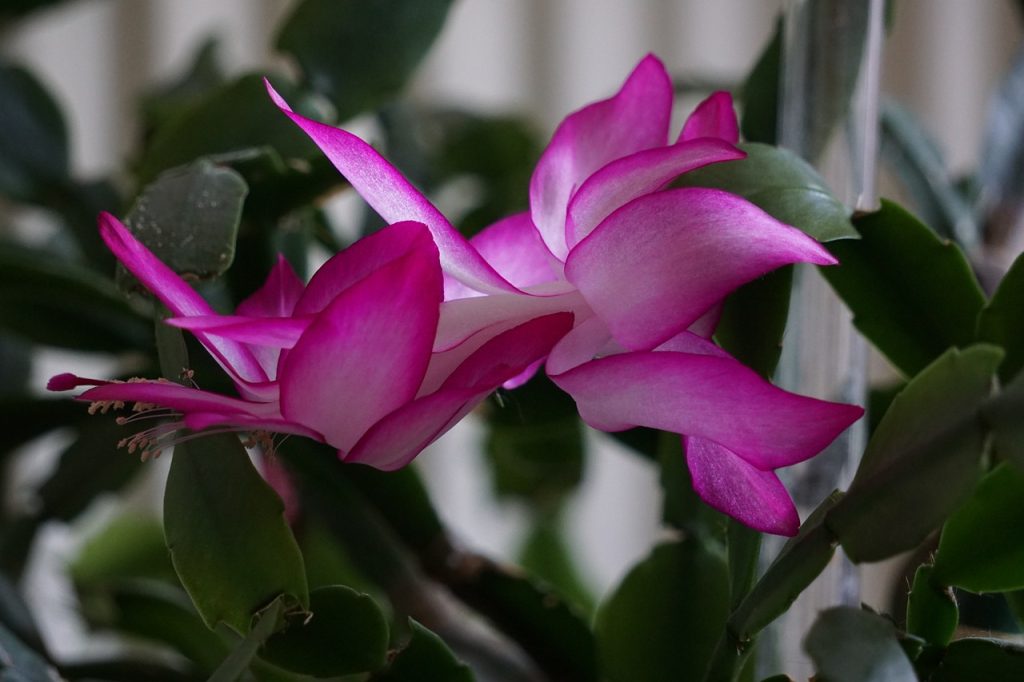
Setting up the perfect environment
Cacti are pretty tough guys! They are known for their hardiness and ability to thrive in challenging environments, but they still require specific growing conditions to flourish indoors. Here are some key factors to consider when setting up the perfect environment for indoor cacti:
- Sunlight: Cacti require plenty of bright, direct sunlight to grow and thrive. Ideally, they should be placed in a south-facing window that receives at least six hours of sunlight each day. If you don’t have a sunny window, don’t worry – you can supplement with artificial grow lights.
- Temperature: Cacti prefer warm, dry environments and can tolerate temperatures between 15 and 30 degrees Celsius (60 to 90 degrees Fahrenheit). Avoid exposing your cacti to draughts or placing them near heating or cooling vents.
- Air circulation: Good air circulation is crucial for preventing fungal growth and promoting healthy growth in cacti. Keep your indoor cactus in a well-ventilated area, or use a fan to increase air flow.
- Soil: Cacti require well-draining soil that allows excess water to escape quickly. You can purchase pre-mixed cactus soil or make your own by mixing equal parts of sand, perlite, and potting soil.
- Pot: When choosing a pot for your cactus, opt for one that is slightly larger than the plant’s current size and has adequate drainage holes in the bottom. Terracotta pots are a popular choice because they allow for air and water flow.
- Drainage: Good drainage is essential for preventing root rot in cacti. Make sure your pot has plenty of drainage holes and use a layer of gravel or pebbles at the bottom to prevent the holes being clogged with compost.
- Watering: Cacti are drought-tolerant and only require watering when the soil is completely dry. Water deeply but infrequently, and avoid getting water on the plant’s leaves or stem, which can lead to rot.
Caring for your indoor cacti
Although cacti are generally low-maintenance plants, caring for your indoor cactus does require some attention to ensure it stays healthy and happy. Here are some tips for watering, fertilizing, and preventing common problems that can arise when growing cacti indoors.
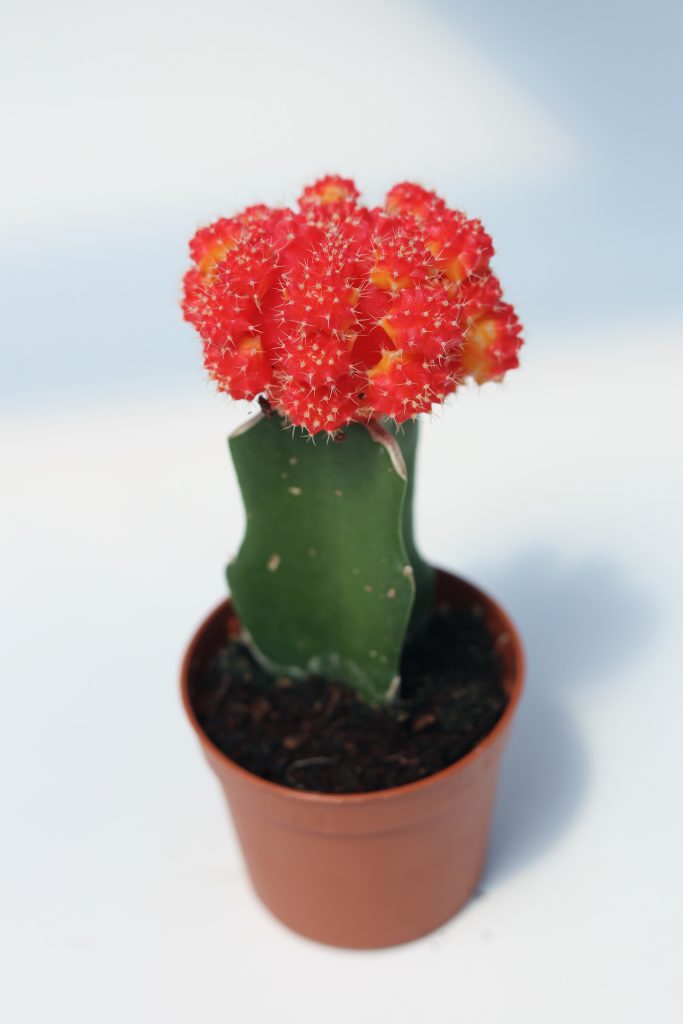
Watering Your Cactus
Cacti are native to dry, arid environments, so they don’t require frequent watering. In fact, overwatering can lead to root rot and other problems. To water your cactus, wait until the soil is completely dry before giving it a thorough watering. Make sure the pot has drainage holes so excess water can drain quickly. During the winter months, reduce watering to once a month or less.
Fertilizing Your Cactus
Cacti require very little fertilizer, but a light feeding once or twice a year can help promote healthy growth. Use a balanced, water-soluble fertilizer and dilute it to half strength before applying. Apply the fertilizer to the soil, not the plant’s leaves or stem.
Preventing Common Problems
Despite their hardiness, cacti can still fall victim to pests and diseases when grown indoors. Here are some common problems to watch out for and how to prevent them:
- Mealybugs: These white, cottony insects can infest cacti and drain them of nutrients. To prevent mealybugs, inspect your cactus regularly and wipe down the leaves and stem with a damp cloth to remove any dust or debris. You can also use a natural insecticidal soap to treat mealybugs if they do appear.
- Root Rot: Overwatering or poor drainage can lead to root rot, which can be fatal for cacti. To prevent root rot, make sure your cactus is in a well-draining pot and wait until the soil is completely dry before watering.
- Sunburn: Yes, you read that right! While cacti love bright, direct sunlight, too much can cause sunburn and damage the plant’s leaves and stem. To prevent sunburn, place your cactus in a south-facing window and provide some shade during the hottest parts of the day.
By following these tips for watering, fertilizing, and preventing common problems, you can keep your indoor cactus healthy and thriving for years to come.
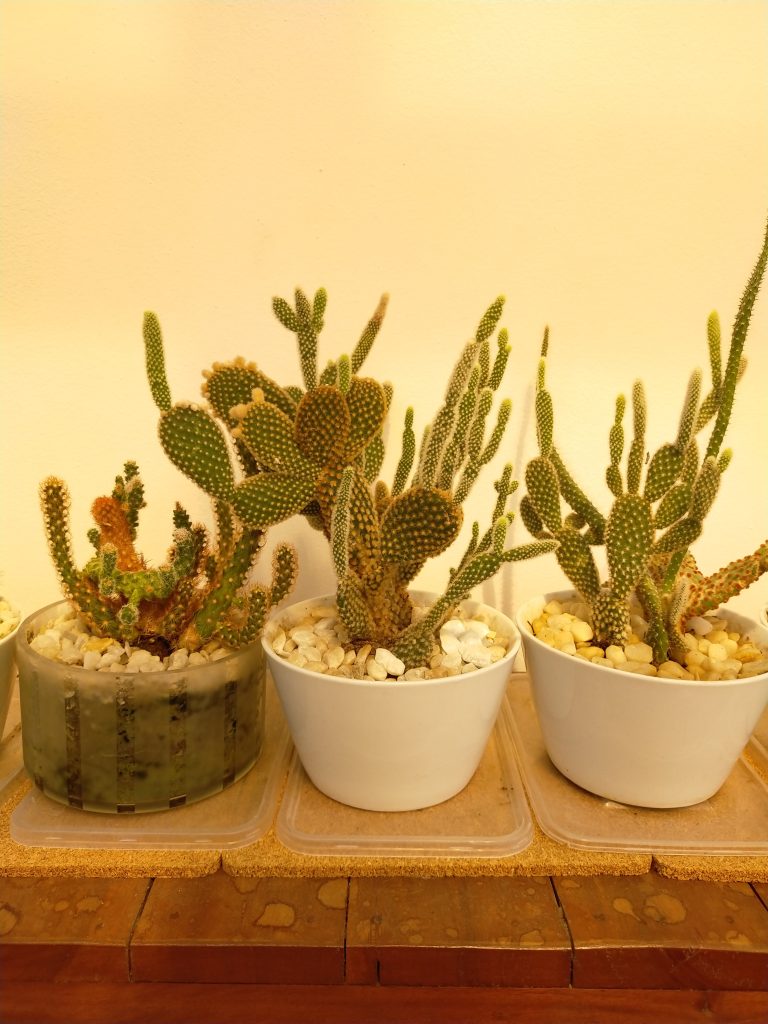
The best cacti for indoors
There are several types of cacti that make excellent houseplants and are well-suited for indoor growing. Here are some of the best cacti for indoor gardening, along with their Latin names:
- Christmas Cactus (Schlumbergera bridgesii): The Christmas cactus is a popular choice for indoor gardening due to its stunning blooms in shades of pink, red, and white. It prefers bright, indi rect light and well-draining soil.
- Easter Cactus (Rhipsalidopsis gaertneri synonym Hatiora gaertneri): Similar to the Christmas cactus, the Easter cactus produces beautiful blooms in the spring. It requires similar growing conditions to the Christmas cactus, with bright, indirect light and well-draining soil.
- Golden Barrel Cactus (Echinocactus grusonii): The golden barrel cactus is a striking addition to any indoor garden, with its distinctive shape and spines. It requires plenty of direct sunlight and well-draining soil.
- Moon Cactus (Gymnocalycium mihanovichii): The moon cactus is a colorful and unique addition to any indoor garden, with its brightly colored tops and lack of chlorophyll. It requires bright, indirect light and well-draining soil.
- Bunny Ears Cactus (Opuntia microdasys): The bunny ears cactus is a small, cute cactus with soft, fuzzy pads that resemble rabbit ears. It requires bright, direct light and well-draining soil.
These cacti are all relatively easy to care for and can thrive in indoor environments with the right growing conditions.
Conclusion
In conclusion, growing cacti and succulents indoors is an excellent way to bring unique, low-maintenance plants into your home. Cacti are well-suited to indoor environments and cope well with low humidity and infrequent watering. They come in a wide range of shapes, sizes, and colours so they can suit any style of home decoration. They are also great air purifiers and known for their longevity.
When choosing a cactus, consider factors such as size, light requirements, temperature tolerance, and soil and pot requirements. Setting up the perfect environment for indoor cacti involves considering factors such as sunlight, temperature, air circulation, soil, pot, drainage, and watering. Caring for indoor cacti requires attention to watering, fertilizing, and preventing common problems such as mealybugs. Overall, cacti are a rewarding addition to any indoor garden!
